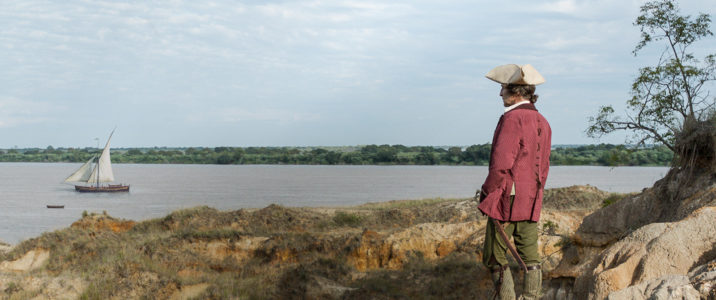Of the many things to be gained from the year in film, arguably the most notable was the growing role of multi-media platforms in exhibiting world cinema. Many of the year’s best films hailed from all over the world, from Mexico to South Korea, and a great deal of them were distributed by streaming services. This isn’t to say that companies like Netflix don’t have some ground to cover in terms of equaling or surpassing the theatrical screening experience. Nevertheless, the films of 2018 provided a benchmark for globalist discourse that fundamentally challenged the isolationist policies of far too many political leaders, right down to the popularity of films like Black Panther or Crazy Rich Asians which addressed, either directly or indirectly, a legacy of colonialism while looking toward an optimistic future. This fundamentally wary optimism, entwined with a pragmatic understanding of how far we have yet to go, was a common strain in the best films of the year.
10. Support the Girls
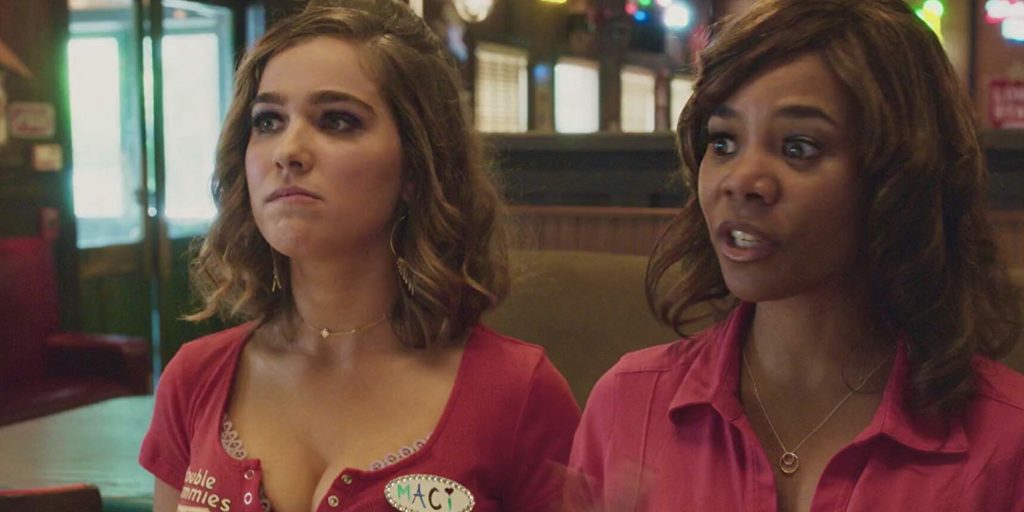
This year saw a number of great films that approached a slew of heavy themes with a light, almost buoyant touch, though few were as beguiling as Andrew Bujalski’s Support the Girls. By and large a portrait of a day in the lives of the servers of a small Texan restaurant, the film treads a careful line in how it characterizes the hierarchal structure led ostensibly by Lisa (Regina King, in one of the finest performances of the year). Lisa reinforces the corporate rhetoric of viewing her girls akin to “family”, though she genuinely values her employees and customers as individuals. Nevertheless, there is a fomenting futility in the behavior Lisa attempts to cultivate within her dominion, particularly when her influence is undermined by her boorish regional manager as well as the imminent opening of a rival big-chain competitor. The erosion of business as a fixture within community, as well as the sexism inherent in the basic power dynamics of capitalism, never veer into the realm of proselytizing nor hokey sentimentality. What makes Support the Girls so delightful is the effortless way the actors, from King to Haley Lu Richardson, are able to inhabit their characters as fully-realized people rather than schematic functions of a plot engineered to reach a climactic break. Though there is a moment of catharsis, it belongs wholly to a triad of women in a moment that is simultaneously hilarious and rife with despair at the untenable conditions of the status quo.
9. Minding the Gap
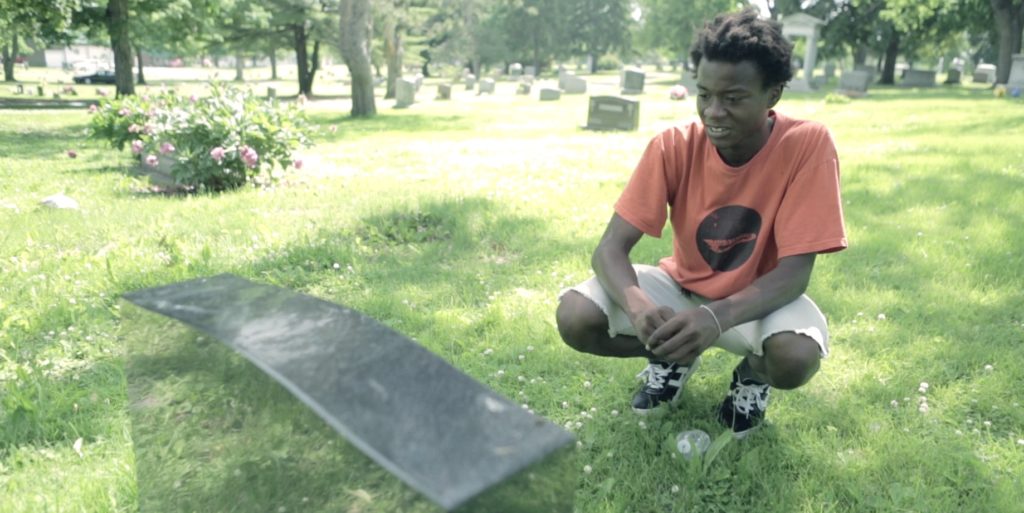
A number of films from 2018 observed skate culture as a complex signifier of class and race, including Skate Kitchen and mid90s. Yet Minding the Gap differs tremendously from these films, if for no other reason than it is a documentary. Comprised of footage shot over twelve years, it is the chronicle of three friends living in Rockford Illinois and their gradual transition into adulthood. One of those friends, Bing Liu, shot all of this footage and directed the documentary, and without a hint of self-congratulation or aggrandizement he delves into deeply painful trauma with gentle yet firm precision. He and his friends have a shared history of abuse from their father figures; indeed, one of these young men is at risk of perpetuating this cycle of abuse into his own relationship with the mother of their child. Liu links this cycle with the prevalent hopelessness of poverty that has only solidified between generations, and it is a burgeoning awareness of this connective tissue, as well as what distinguishes all of these figures from one another (one friend, an African-American man, navigates the reality of being black among predominantly white friends) that lends the film a clear-eyed specificity. All of this culminates in sequences of the boys-turned-men skating, shot in gliding steadicam which gracefully emphasizes the transcendent necessity of the sport. More than anything, Minding the Gap is a frankly personal view of the socially neglected from the ground level.
8. If Beale Street Could Talk
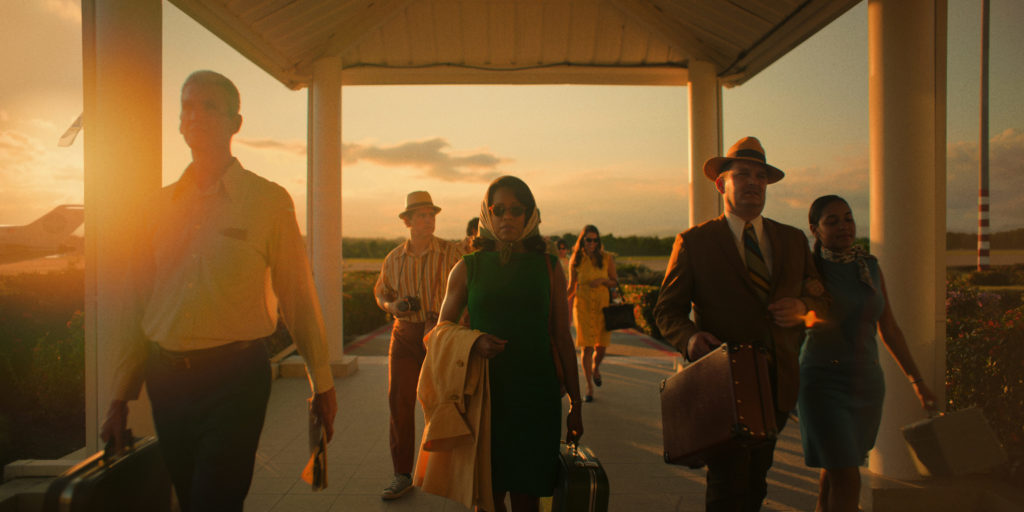
The greatest stories can be of their time and simultaneously encompass a universal truth that exists beyond the immediacy of the era in which they are told. That is certainly true of James Baldwin’s If Beale Street Could Talk, one of the great American novels about black love in 1970s Harlem. Who else but Barry Jenkins, the director of Moonlight, could translate the wounded romanticism of Baldwin’s prose into its semiotic equivalent? Indeed, so much of the novel is directly translated to the screen that it is easy to overlook the subtle signatures Jenkins leaves upon the tale, from the immersive sound design to the framing of his characters that recalls the works of the late Jonathan Demme. Much like his previous feature, Jenkins’ film is an impressionistic ode to the persistence of love in the face of every force which threatens to quell or negate it. His boldest gesture is in the deviation from Baldwin’s ending, one that is grounded in a more pragmatic reality that nevertheless asserts Baldwin’s enduring optimism at the basic truth of being alive. Jenkins’ If Beale Street Could Talk is both a fitting tribute to a great writer and a transgressive work of African-American Cinema that samples genres and styles of mid-century directors, many of them white, and makes something powerfully, defiantly its own.
7. Zama
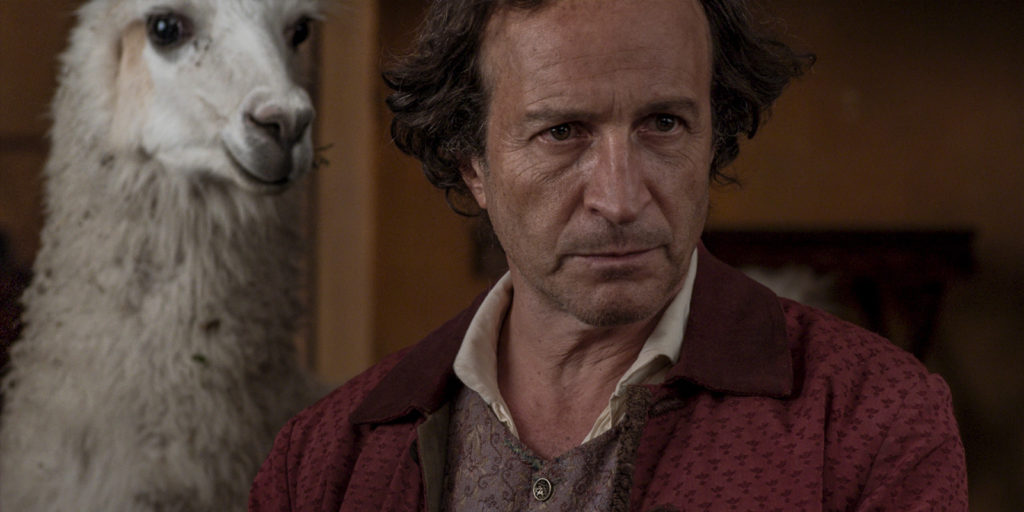
Colonialism as a Sisyphean cycle of hell has been a popular topic in postmodernist discourse, almost to the point of losing its political immediacy. Yet Lucrecia Martel’s Zama, an adaption of Antonio di Benedetto’s 1956 novel, provides a pointed addition to this dialectic in the methodical, wryly caustic way it observes the destruction of the eponymous corregidor for the Spanish presence in Paraguay during the 18th Century. The trifurcated structure of the tale permits Zama to witness various venues of autonomy, be they sexual, artistic, or political, disintegrate as he anxiously awaits permission from Charles IV to return to his wife and child. Martel, in her patient, nearly laconic pacing, simultaneously aligns us with her hero while emphasizing the basic absurdity of his existential plight. Gradually, this absurdity transitions from the blithely comical to the nightmarish, yet Martel never loses sight of the ongoing psychic emasculation enacted upon Zama. Indeed, what her film most clearly conveys is a brutal irony in the myth of patriarchal sovereignty. The land Zama consigns himself to cultivating provides nothing for him, nor do those who charge him with his task. The fundamental evil of colonialism, Zama argues, is a form of banal stasis which slowly, insidiously sucks the life out of all things.
6. Shoplifters
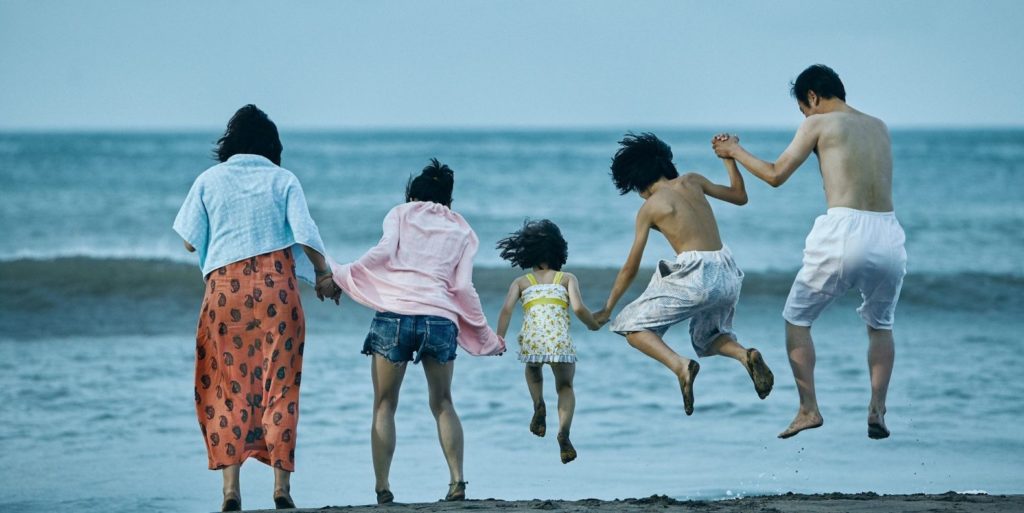
Few contemporary directors are as adept in deliberate pacing as Kore-eda Hirokazu. For nearly a quarter-century, the master filmmaker has proven himself the premier crafter of stories that do not reveal themselves immediately but rather unfold gently. This patient, intelligent compassion towards both audience and denizens of the tale is apparent in the director’s latest film, and Shoplifters is indeed one of his richest works. Through the fastidious observation of a makeshift family struggling to survive on the fringes of modern Japanese society, Kore-eda makes plenty of pointed political statements on the failure of his country’s socio-economic policies while never softening the flaws of his heroes. What can be ascertained from the broadest strokes of this Dickensian parable is a dismayed regard toward a social structure which deigns to dictate what is appropriate for those confronting impossible conditions. This sounds like the makings of a dictum fueled by righteous fervor and rage, yet Kore-eda maintains his convictions while never betraying the complexity of the relationships forged between his characters. Ultimately, what makes Shoplifters a wonderful, heartbreaking film is its commitment to the humanity of all those drifting in and out of the frame. Kore-eda looks at these people with an unsparing eye to illuminate the love and dignity they both crave and deserve, as do we all.
5. Roma

Very few auteurs have pushed themselves to expand their aesthetic repertoire as boldly or as dramatically as Alfonso Cuarón has. The director, who began his career with a darkly comic parable on the AIDS epidemic with Sólo Con Tu Pareja, has encapsulated the breadth of experience in his professional and personal life to craft what may very well be his masterpiece. Roma stands as a remarkable achievement, not least in part because of the scope it affords a seemingly singular perspective. Through the eyes of a maid named Cleo in the 1970s, based on the very one Cuarón grew up with as a child in a middle-class household, Roma crafts a vivid tribute to Mexico as a country at odds with itself, one that seeks to embrace a western model of affluence while the indigenous population is largely consigned to a role of servitude. This precarious political dichotomy is emblematized in the film’s harrowing dramatization of the Corpus Christi Massacre, yet Cuarón is not interested in regurgitating social markers for the sake of historiography. Ultimately, he wants to probe the depths of the emotional turmoil which fuels so many of his finest films. This in itself can be a problematic reading of a film whose heroine retains a great deal of her interior life from both those within and beyond the confines of the screen. But Roma is a film that justifies it’s extravagances and risks, largely because of the emotional denouement which comprises the final third. The film, like Cleo, reveals only as much as it desires. “I have so much to tell you,” she says to a fellow maid at the film’s end, yet we never hear what those words are, nor do we need to. They are not for us. We are only so privileged to see so much of the life this woman leads that, when she leaves the frame for good, it is with equanimity we accept the end of the film. All things pass, and that includes the audience stumbling out of a darkened auditorium while wind chimes, birdsong, flute, and jet engines fill the soundscape of a world which once existed and yet can only belong within the cinematic realm of memory.
4. Let the Sunshine In
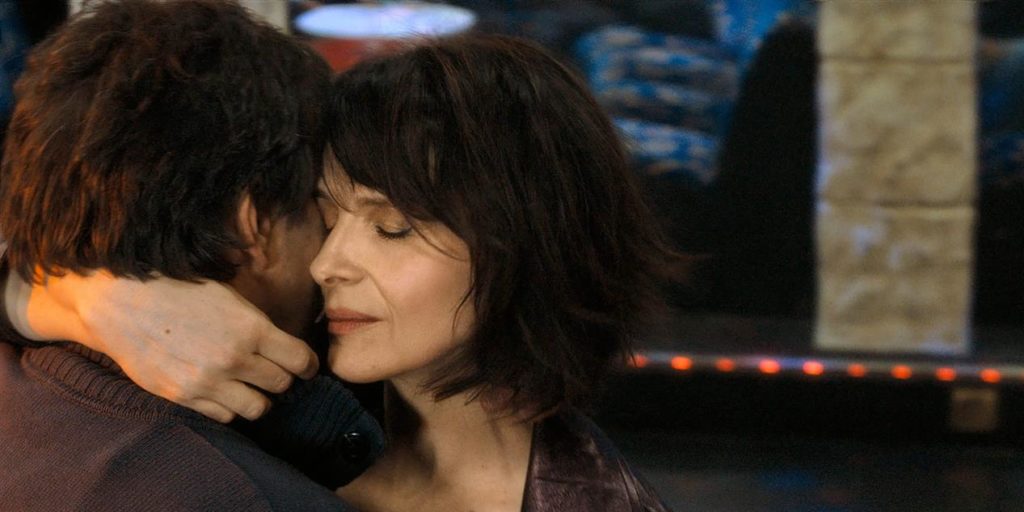
Love, among its myriad, messy forms, can be likened to an ongoing inner dialogue. This is a somewhat peculiar description of what fuels Claire Denis’ film Let the Sunshine In (Un beau soleil intérieur), which adopts a seemingly unassuming goal in its structure of vignettes revolving around a modern Parisian woman named Isabelle (Juliette Binoche) in constant pursuit of a lasting romance. The film was inspired by Roland Barthes’ musings in his Fragments: A Lover’s Discourse, but Denis was insistent on not having her audience interpret her film as a direct adaptation. While Barthes’ questioning of the way love informs the sense of self may, in some respects, be analogous to the existential concerns of the film’s protagonist, Let the Sunshine In operates in its own vernacular as a deceptively leery evaluation of love in a late-capitalist schema. Isabelle finds herself disdainful of the bourgeois snobbery of her peers, including one of her lovers, a chauvinist and piggish banker, yet she is imprisoned by her own neuroses and dependence on her social standing. This ironic fact may not be surprising, but what makes Denis’ film so remarkably poignant is the way it never condescends Isabelle’s vaguely-defined vision of love in toto. Emblems of sociopolitical identity, which are determined by global commodity and transnational iconography, can also be reclaimed in fiercely personal terms. This delicate balance is epitomized in a truly breathtaking sequence where Isabelle dances with a homely-looking stranger to the strings of Etta James. The feeling watching this sequence is one of bewilderment, acknowledgment of the cliched soundtrack cue, and then finally a disarmingly moving affirmation of the possibility of attaining what we seek out so fervently. It takes a filmmaker to observe all of these paradoxical truths with an empathetic, knowing understanding of humanity akin to Renoir. Denis is one such filmmaker, and this is one such film.
3. The Other Side of the Wind
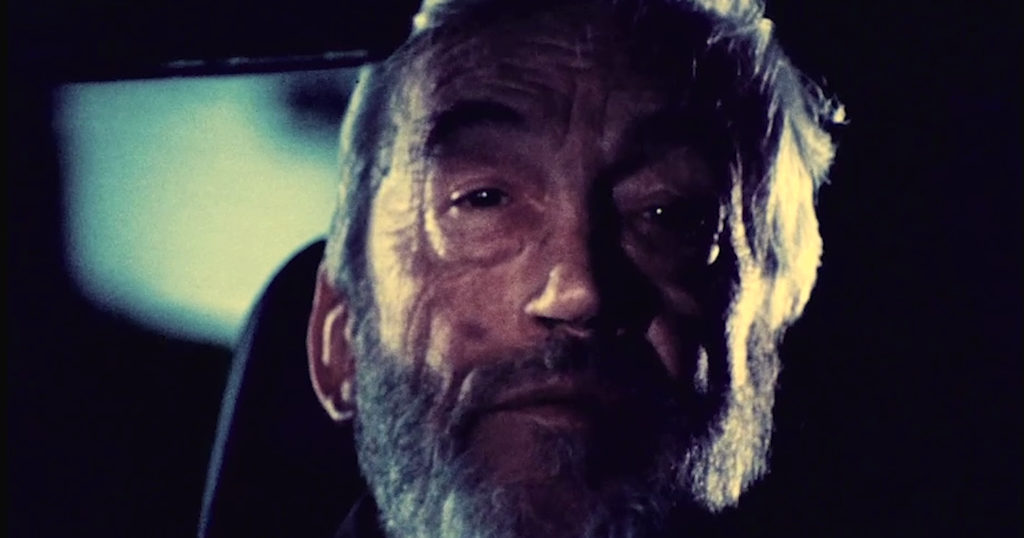
Like shards of a dream which have crystallized into an imitation of their full being, The Other Side of the Wind is an enticing enigma that exudes, and is ensconced in, an oblique mystique. That it was the uncompleted final film of Orson Welles, only just now brought to a form approximating the late master’s vision, plays no small part in the generation of this allure. But here is a film about a filmmaker who dies before his final film is completed. Is Jake Hannaford (John Huston, in a performance that is frightening in its layers of self-loathing) a surrogate figure for Welles himself? The answer is not so simple. One could read The Other Side of the Wind through the lens of biographical dissection, but that would only yield a fraction of the pleasures this kaleidoscopic, bruising masterwork has to offer. Its vision of a man’s final night culled from an abundance of film sources embodies Foucault’s fascination with the panoptic vision of surveillance he ascribed to the modern world, and the lingering question of legacy that so haunted Welles in his films is brought to a complicated impasse. Indeed, Foucault’s inquiries into prison as social structures come to be literalized by Hannaford’s own imprisonment, built from the bars of his persona and that of his familial dynasty. But is he a great filmmaker? Welles has no interest in answering that question, and if anything is unsparing in his portrayal of the callous bitterness fueling his antihero. Above all, The Other Side of the Wind is a hectic nightmare of one man’s life and work coming to an end not by his own hand but by the implacable momentum of history. It is about the loss of control, both creative and personal, in the exploitative racket we call show business. And, it is, of course, a final, unnerving magic trick from beyond the grave.
2. First Reformed
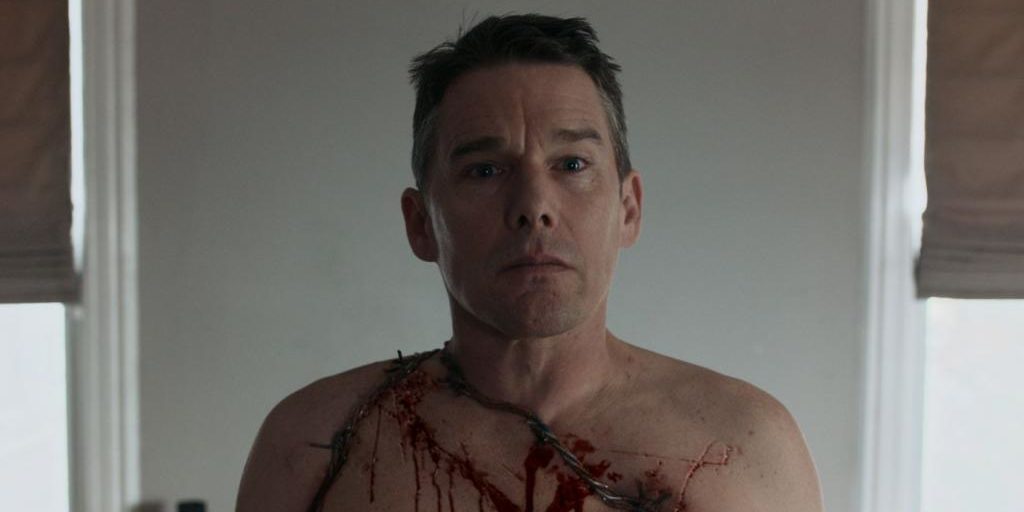
I don’t think any other American film in 2018 captured so fully the litany of despair raging the country than Paul Schrader’s First Reformed. True, the film confines itself to a very particular region of America (upstate New York) and is incredibly specific in its spiritual inquiries. And on the surface, the film’s antecedents are plenty, from Bergman’s Winter’s Light, to Dreyer’s Ordet, and even Schrader’s own script for Taxi Driver, the latter of which informs the volcanic rage brimming under the weathered mien of Reverend Matt Toller (Ethan Hawke, in what may well be his best performance). But in a nearly five-decade career, Schrader has finally woven all of his influences into a harmonious blend which taps into the quaking fear of the irreversible effects of climate change, the powerlessness many feel in relation to the ironclad hegemony, and perhaps most tellingly the role of advocacy and responsibility members of the church hold within their community. Political activism, when applied through religion, can easily succumb to extremism when one surrenders to hopelessness. And it is here where First Reformed poses its most challenging question; how can one be true to themselves, and to God, if they and God’s creation are fading away? The final answer may seem somewhat stunted for some, but I found Schrader’s climax remarkably daring. Whether you read through a literal or ecclesiastical lens marks the fundamental basis of faith. By giving us this question, this choice, Schrader has crafted a spiritually transcendent work worthy of his predecessors and deeply resonant in a world seemingly on the brink of the abyss.
1. Burning

We never solve the mystery at the heart of Lee Chang-Dong’s Burning. We may think we have formulated a plausible solution, and the film certainly leads us down several suggestive avenues. But what makes Lee’s film so deeply disturbing is its impenetrable design. The film only briefly alludes to the 45th President of the United States, but this is not a trite derivation from a social climate fueled by Alternative Facts. Rather, the film interrogates the myriad roles of power functioning in a transnational South Korea, one whose neighbor to the north is portrayed as an unseen source of broadcasts pouring over the border. It is a blistering portrait of the perceptions of privilege perpetuated by a ruling class populated by a legion of “Gatsbys”, none possessing of all these Fitzgeraldian constructs more chillingly than Ben (Steven Yeun in the most difficult performance of the year). Yet by slowly reeling his audience into the labyrinth of its insidious plot, Burning defies easily reductive readings of class resentment or masculine rage to pose an uncompromising vision of who its characters are and who they strive to be, or rather what they wish to present themselves as. This all comes to a head in the film’s final scene, one which may not be as easily readable as it seems. Whether real or the literary catharsis enacted by an aspiring writer, one thing remains abundantly clear; the final act of the film’s protagonist, Jong-su (Yoo Ah-in), is one of self-actualization in a truly horrific sense of the word. Some great films reveal more on repeat viewings, while others continue retaining their mysteries. Not since Mulholland Drive has a film suffused with obsessive, wounded romanticism gone rotten found its way under my skin and stayed there. That, among many more reasons, is why Burning was my favorite film of 2018.
Honorable Mentions
11. Summer 1993
12. Paddington 2
13. Sorry to Bother You
14. BlackKklansman
15. Leave No Trace
16. Suspiria
17. Blindspotting
18. The Guilty
19. The Charmer
20. You Were Never Really Here
